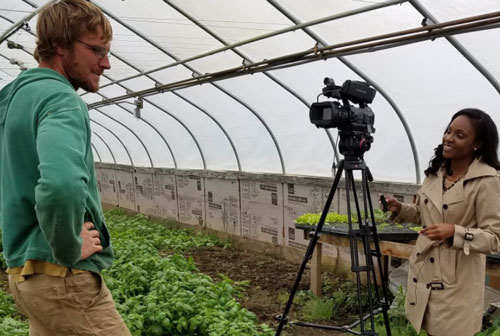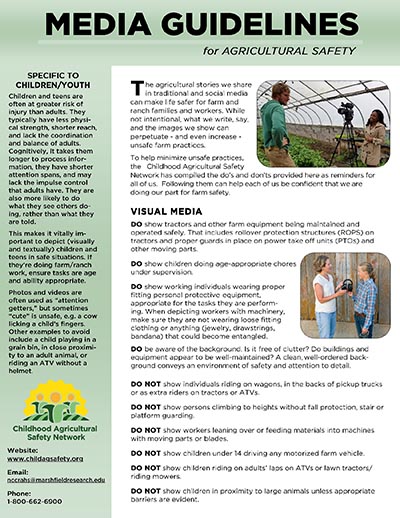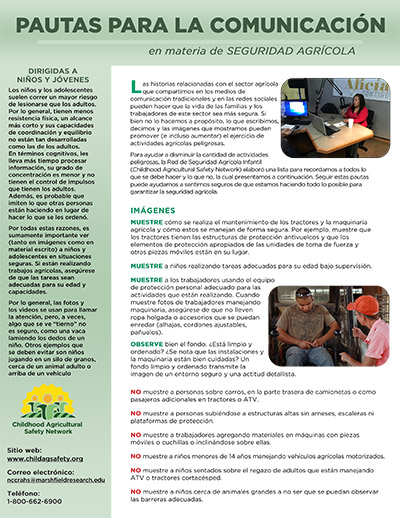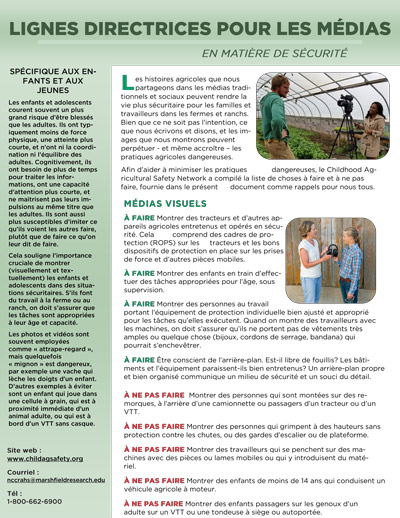Media Guidelines for Agricultural Safety

Photos and videos are often used as “attention getters,” but sometimes “cute” is unsafe.
The agricultural stories we share in traditional and social media can make life safer for farms and ranch families and workers. While not intentional, what we write, say, and the images we show can perpetuate — and even increase — unsafe farm practices.
To help minimize unsafe practices, the Childhood agricultural Safety Network has compiled the do’s and don’ts provided here as reminders for all of us. Following them can help each of us be confident that we are doing our part for farm safety.
Specific to Children/Youth
Children and teens are often at greater risk of injury than adults. They typically have less physical strength, shorter reach, and lack the coordination and balance of adults. Cognitively, it takes them longer to process information, they have shorter attention spans, and may lack the impulse control that adults have. They are also more likely to do what they see others doing, rather than what they are told.
This makes it vitally important to depict (visually and textually) children and teens in safe situations. If they’re doing farm/ranch work, ensure tasks are age and ability appropriate.
Photos and videos are often used as “attention getters,” but sometimes “cute” is unsafe, e.g. a cow licking a child’s fingers. Other examples to avoid include a child playing in a grain bin, in close proximity to an adult animal, or riding an A TV without a helmet.
Emphasize Adult Role in Prevention
Adults Should:
- Provide young children with a safe play area instead of allowing them to play in the worksite.
- Provide sufficient training and personal protective equipment for youth old enough to work.
- Provide supervision as well, but note that supervision alone is insufficient to prevent injuries.



